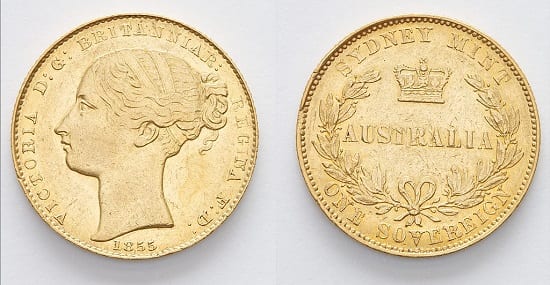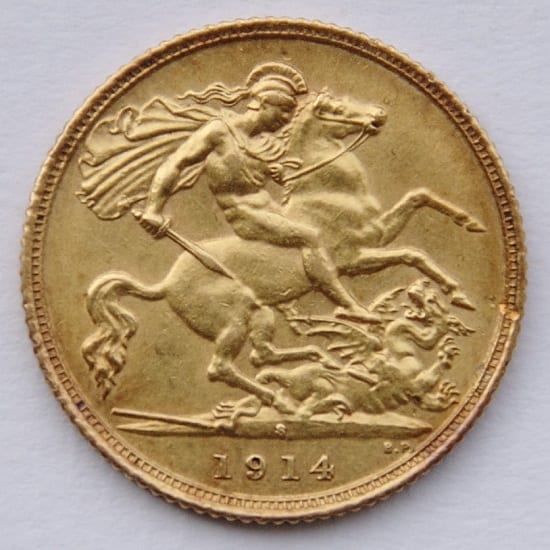Blog
What is the Difference between a Gold Sovereign and a Half Sovereign?
The sovereign is an iconic British coin that is popular amongst investors and collectors. The modern sovereign has been in existence since 1817, and the coin has witnessed the reigns of several British monarchs. The current version features a design of St George and the Dragon, which was created by the famous coin designer, Benedetto Pistrucci.
The sovereign is available in different forms, owing to separate releases during the reigns of different monarchs. The coins issued during the reign of Queen Victoria have three different editions – the young head, the Jubilee head and the old head. These variances make the coin extremely attractive to collectors. In this article, we will explore the differences between a gold sovereign, otherwise known as a full sovereign and a half-sovereign.


Differences in size and weight
Many features are identical like the 22-carat alloy mix and front and back design. A full Sovereign is about the size of a one pence piece and weighs 7.98g, while the half Sovereign is closer to the old halfpenny size and weighs 3.99g. Both have a face value, qualifying them as legal tender in the UK, with the larger coin featuring a £1 value, and the half Sovereign 50p.
The half sovereign goes by that name since it is half the weight of a full sovereign, and has half the gold content. The face value of the half-sovereign is also half a pound. The Bank of England decided to discontinue the gold standard in 1931. Since then, the half-sovereign was minted as a bullion coin. However, it continued to be recognised as legal tender in the UK.
Long history
The introduction of the half-sovereign into British coinage took place in 1544, during the time of King Henry VIII. In contrast, the original sovereign was released during the reign of King Henry VII’s in 1489. However, the circulation of both coins lasted only till 1604. The long hiatus of both sovereigns finally ended in 1817, when they were reintroduced, following the great British re-coinage of 1816. In the years that followed, the half-sovereign, remained in production, until 1926 in the UK. It is interesting to note that Australia continued to use this coin, till 1933. Production of the half-sovereign was restarted only in 1980, however, there were certain special issues for events like the coronation of Queen Elizabeth II.
Dimensions of the half-sovereign
When we speak about modern sovereigns, including the half sovereigns, we are referring to the issues beyond 1817. The dimensions of the modern half-sovereign include a diameter of 19.30 mm and a thickness of 0.99mm. The full sovereign, on the other hand, has a diameter of 22.05 mm and a thickness of 1.52 mm. The half-sovereign, weighing 3.99 g is around half that of the full sovereign, which weighs 7.98 g. The half-sovereign, therefore, contains 0.1176 troy ounces of 22-carat crown gold.


Divisibility considerations
When building a gold portfolio, divisibility is an important factor. The half-sovereign is an invaluable addition to a gold portfolio since it offers the investor the opportunity to invest in a small portion of gold, around half that of the gold sovereign, which contains approximately a quarter ounce of gold. This makes the half-sovereign a more affordable coin and easier to sell when funding cash flows.
Download the FREE Insiders Guide to Gold & Silver Investment here
Tax implications
Both the half-sovereign and the full sovereign are UK legal tender and qualify for CGT exemptions. Since both coins contain investment-grade gold, they can be purchased VAT free.
Talk to the gold experts at Physical Gold when buying sovereigns
Whether you’re in the market to buy half-sovereign or a full one, you can benefit from great impartial advice when you call the investment team at Physical Gold. Our team can offer you advice based on solid research on the right coins to invest in. Call us today on (020) 7060 9992 or get in touch online via our website.
Image credits: Wikimedia Commons and Wikimedia Commons


